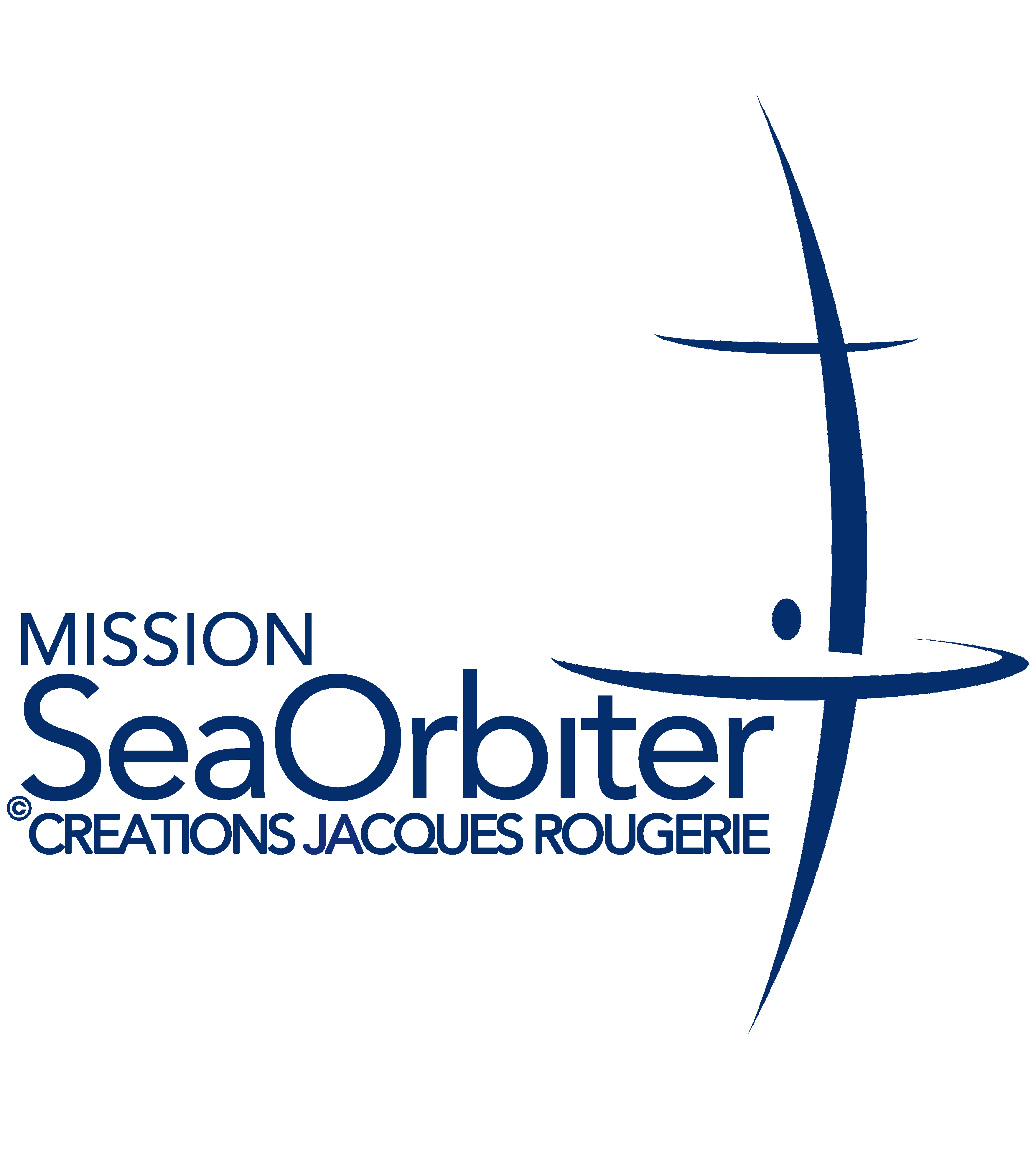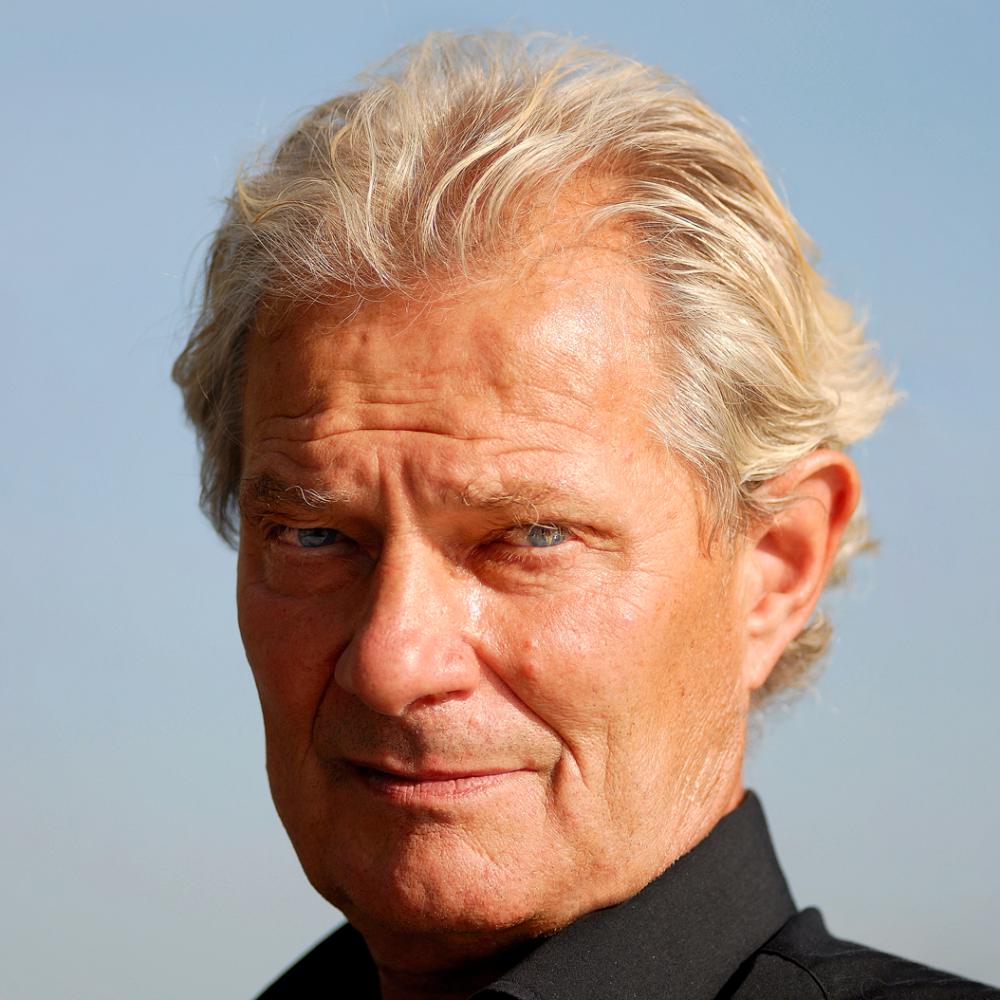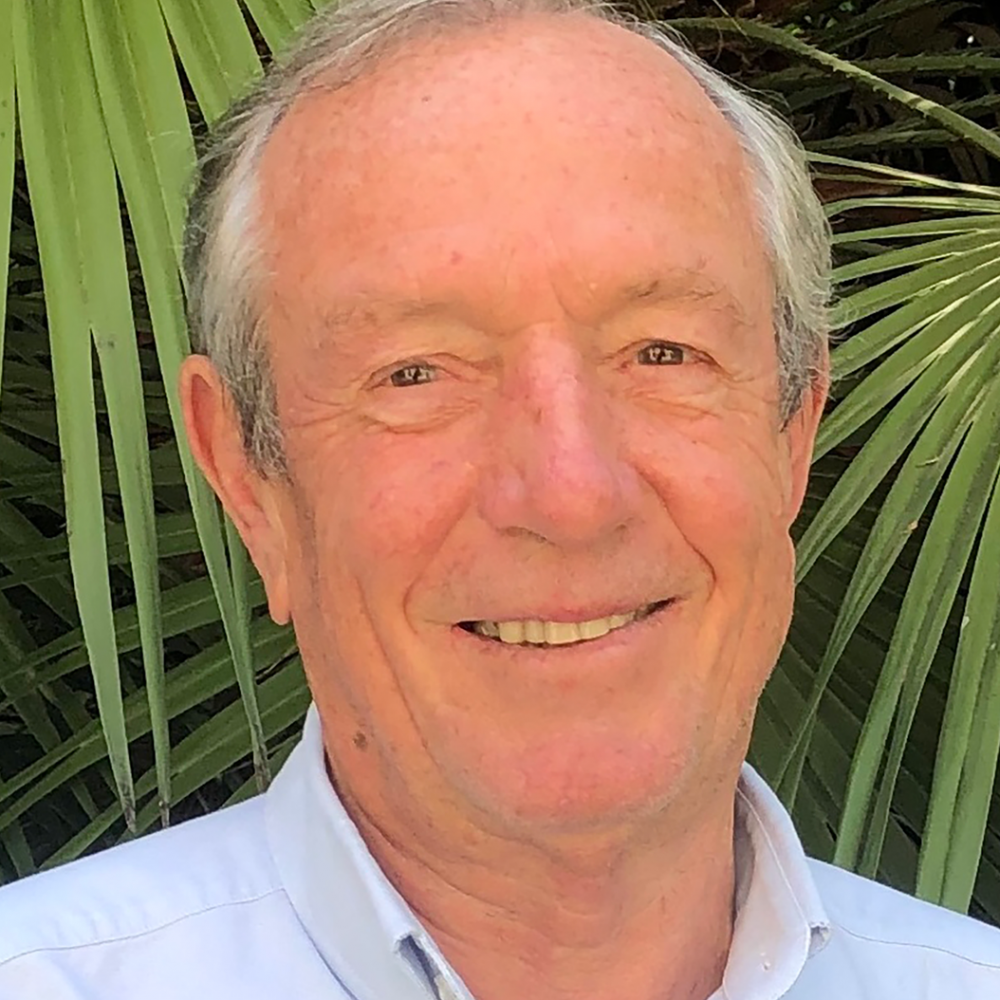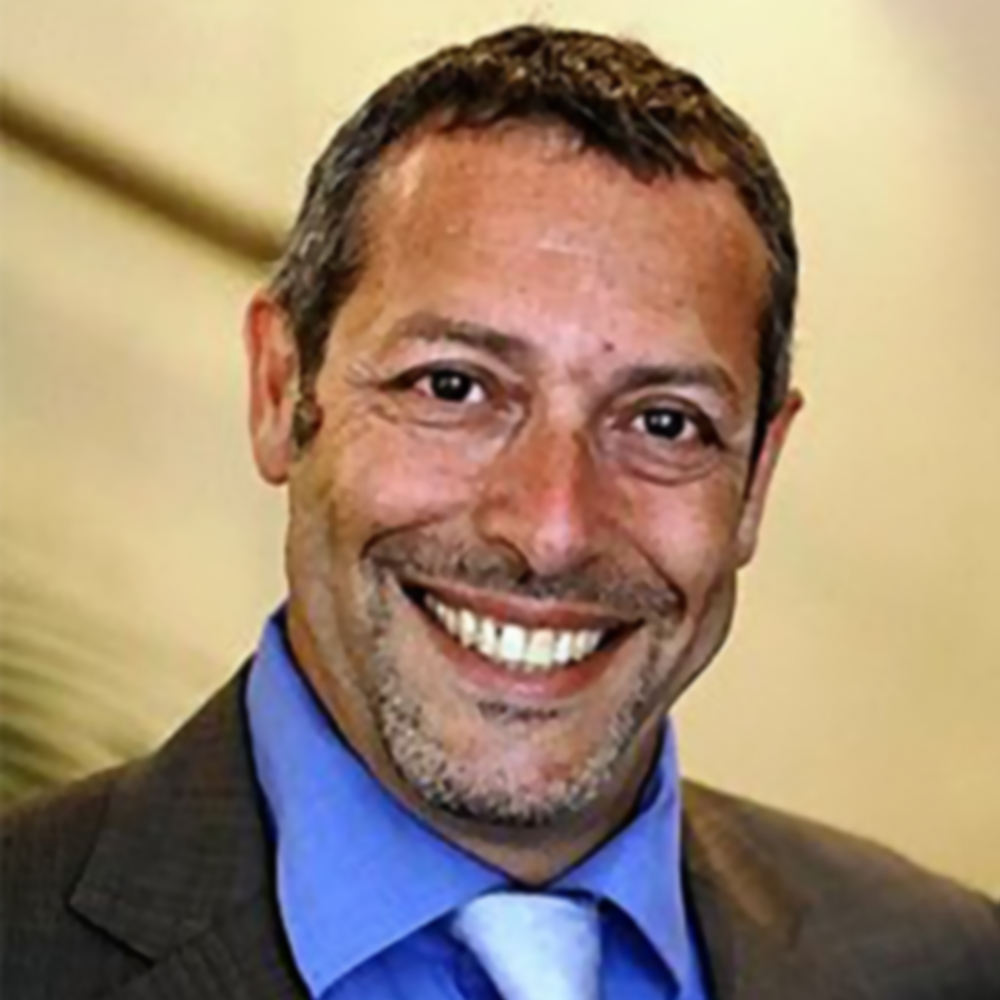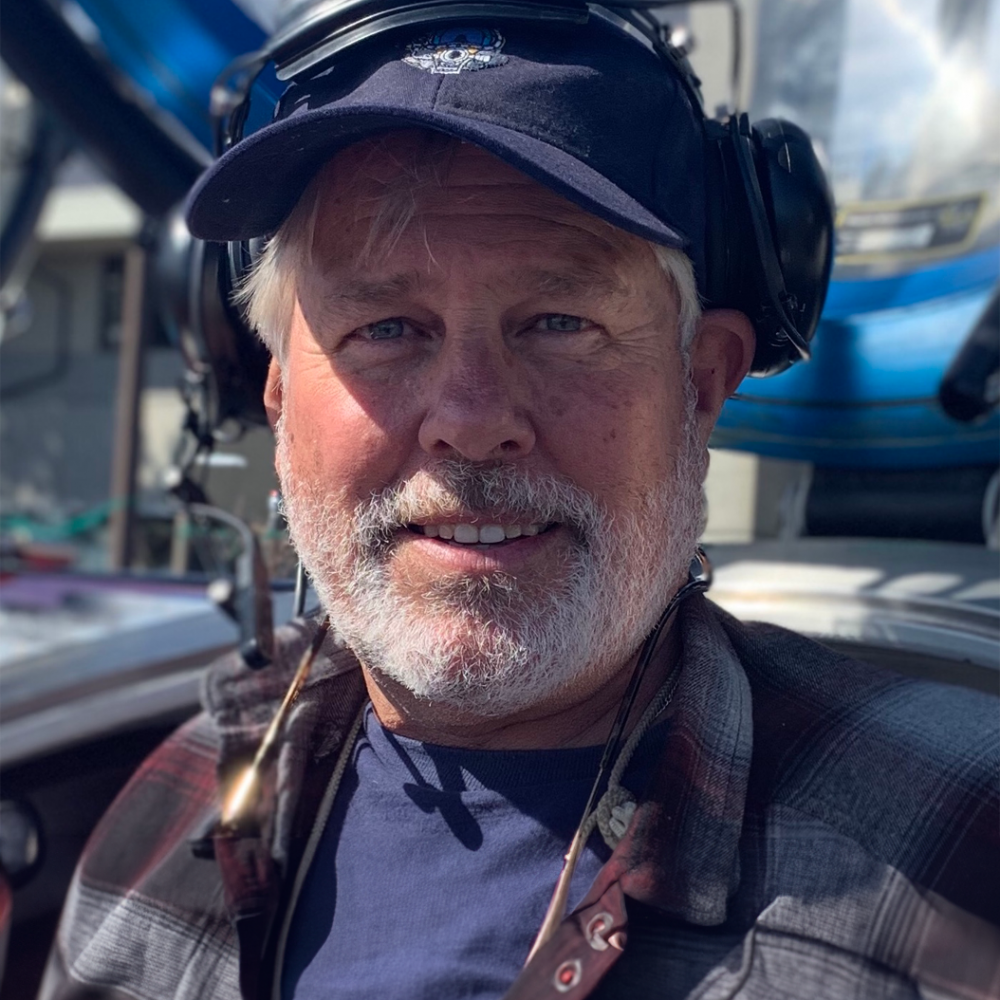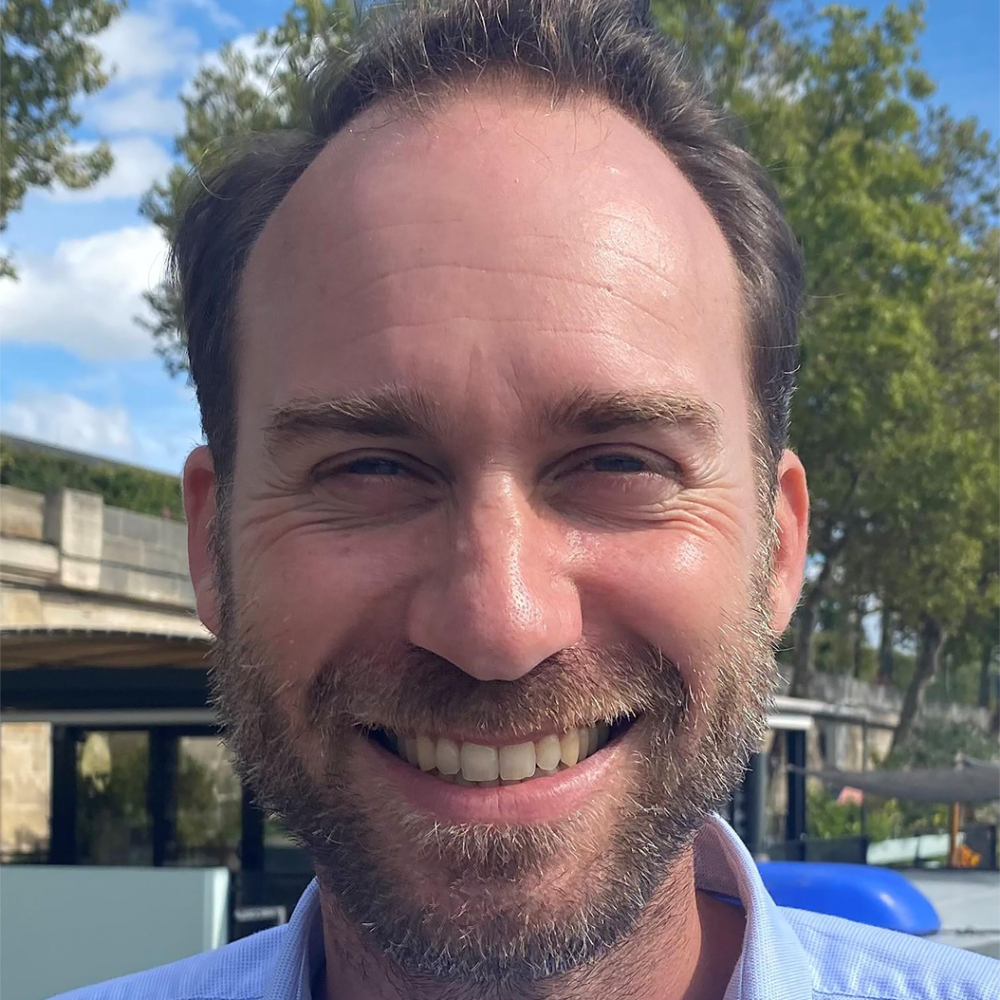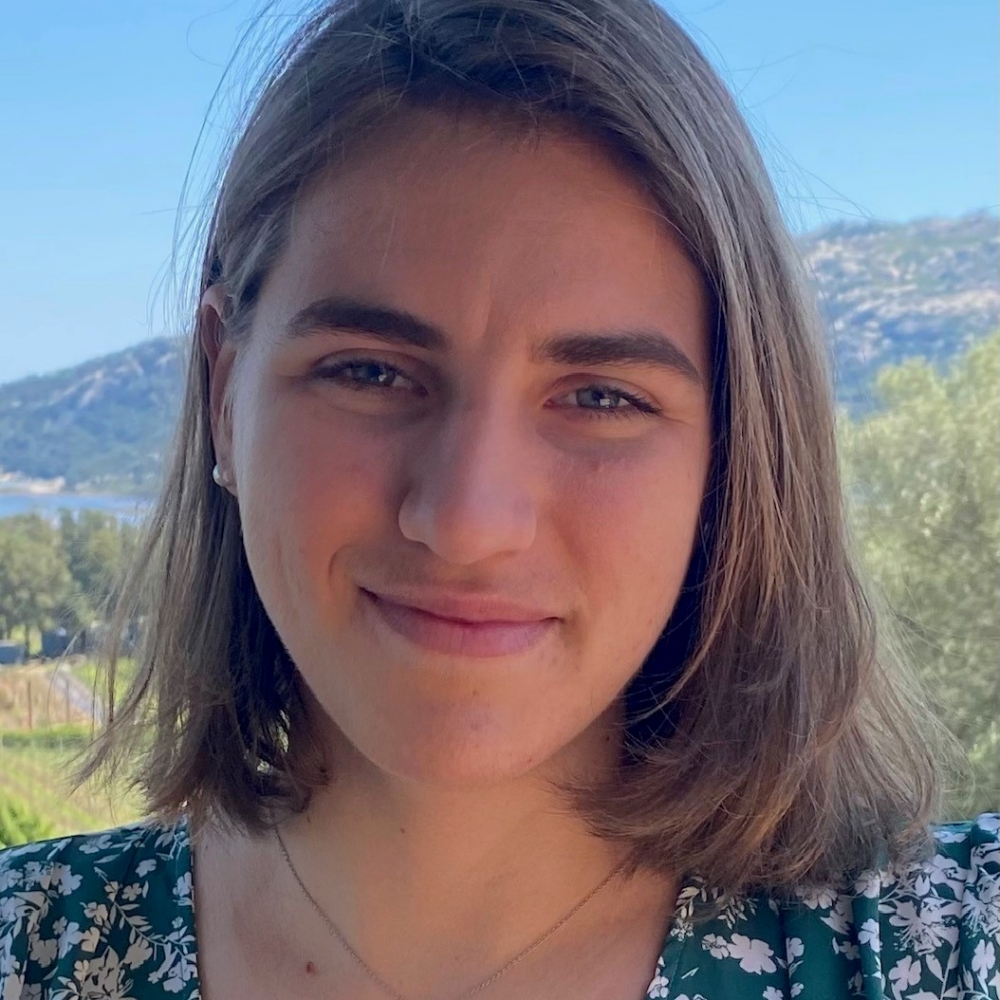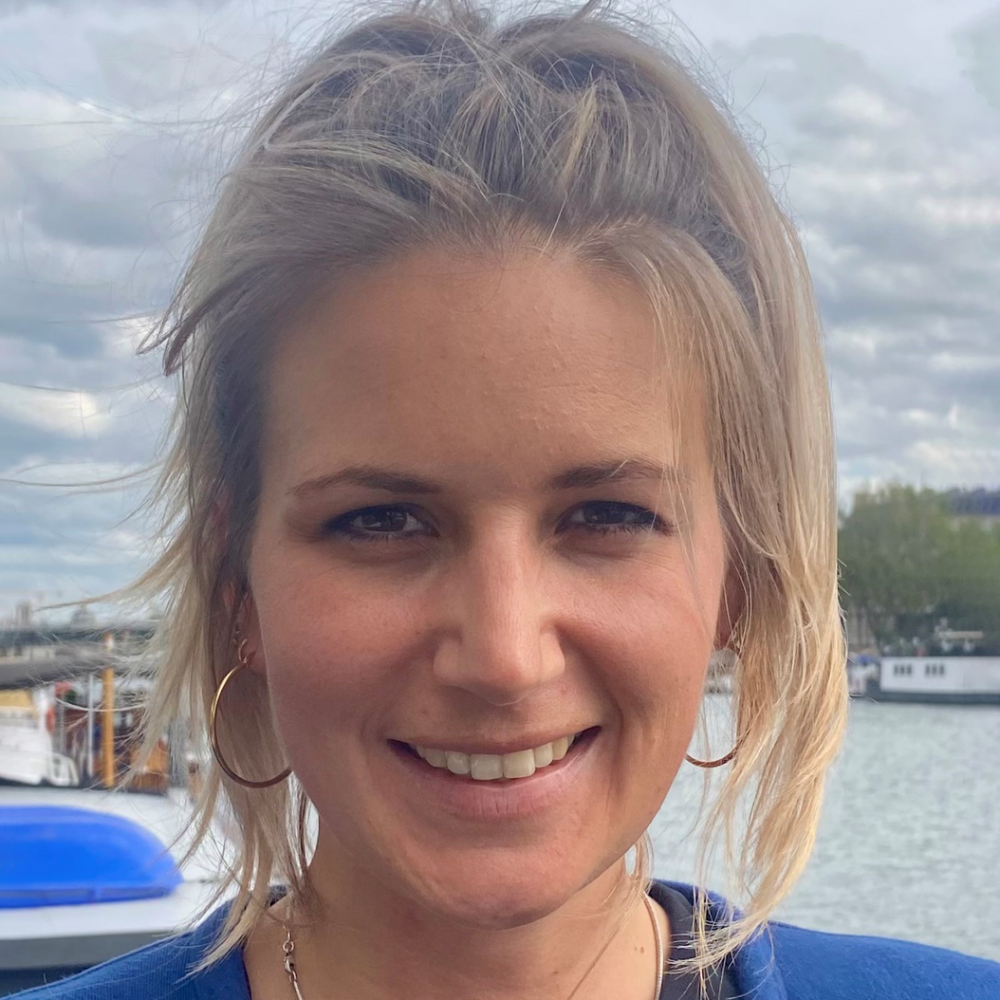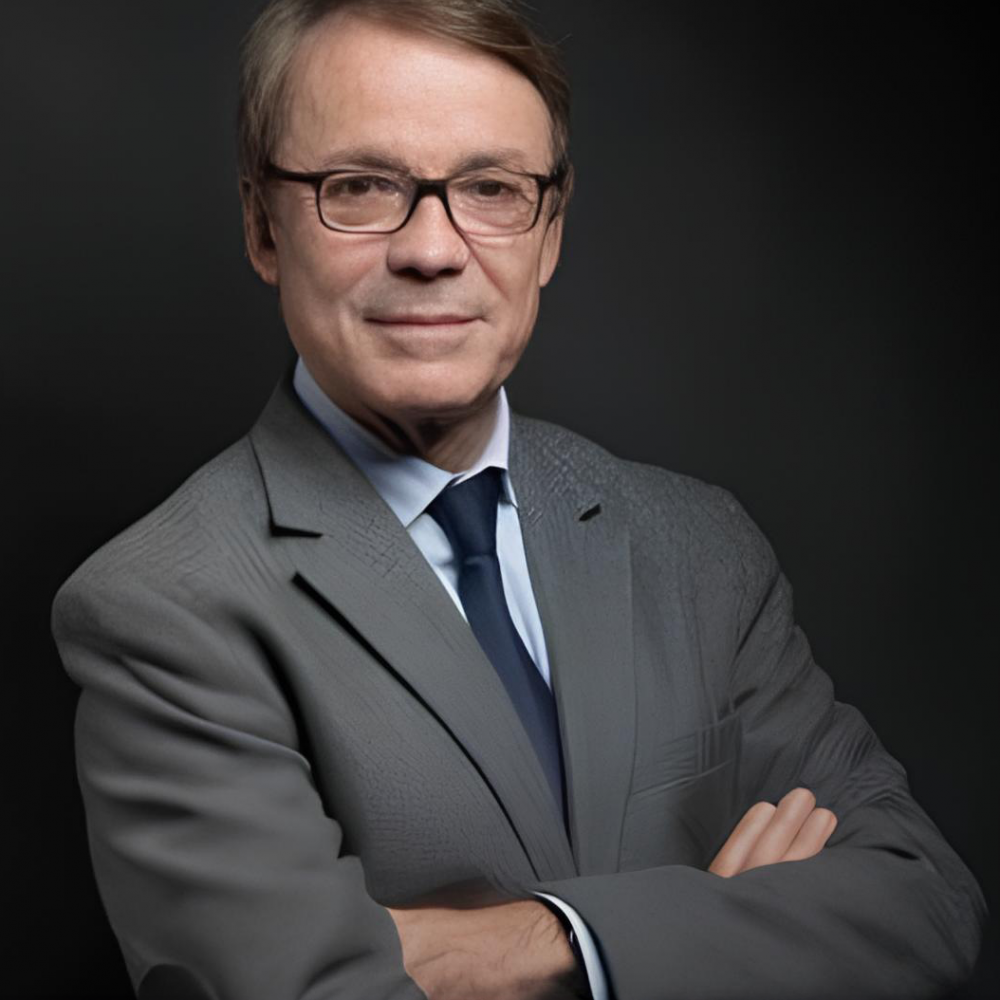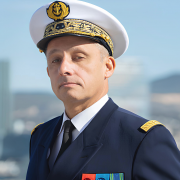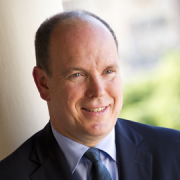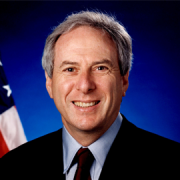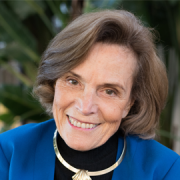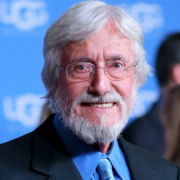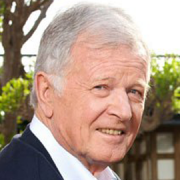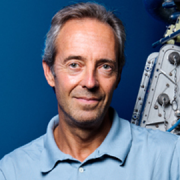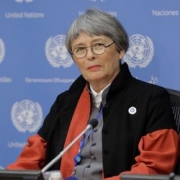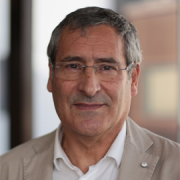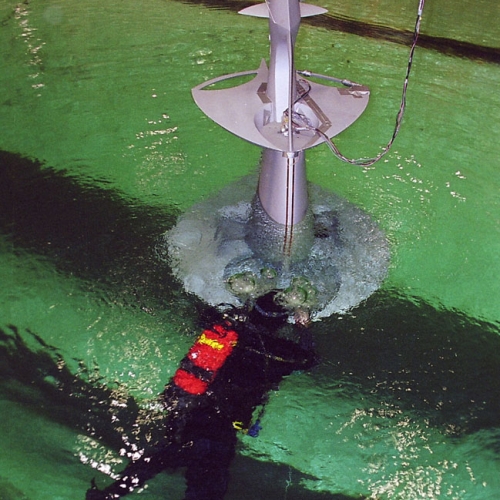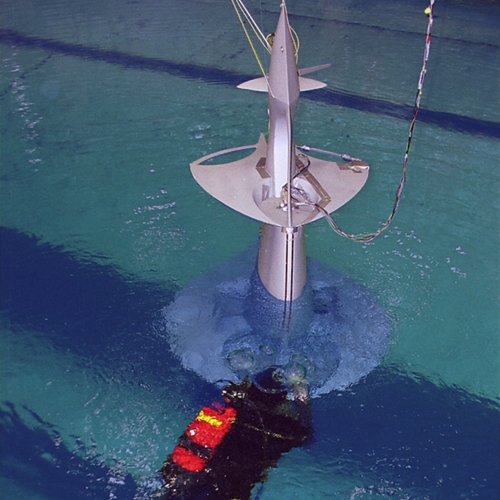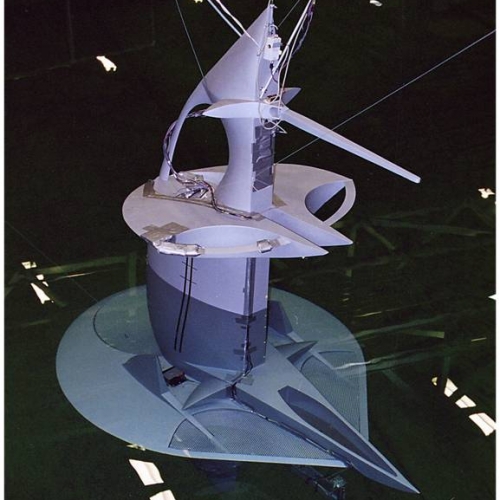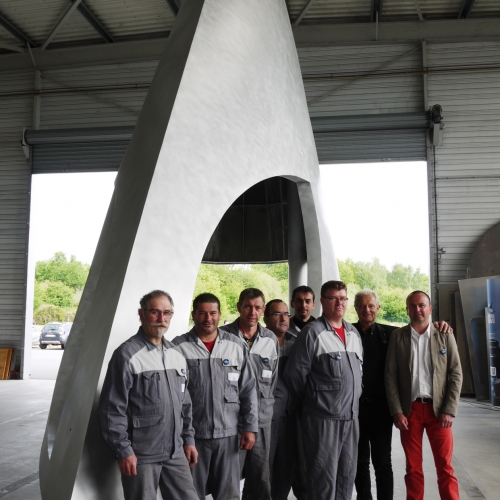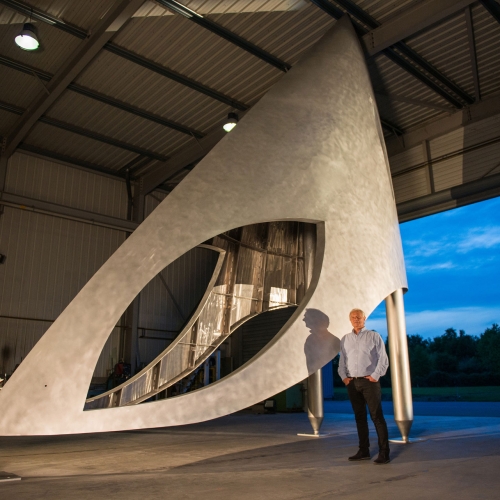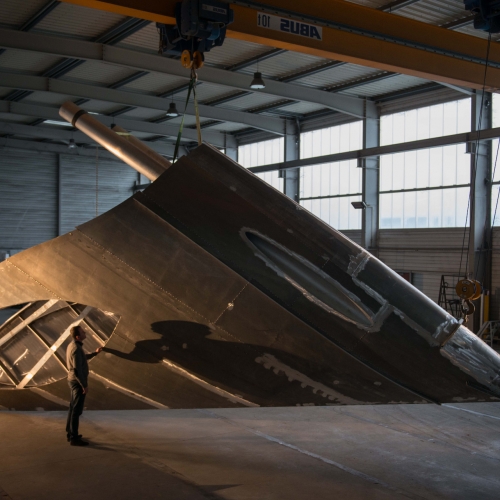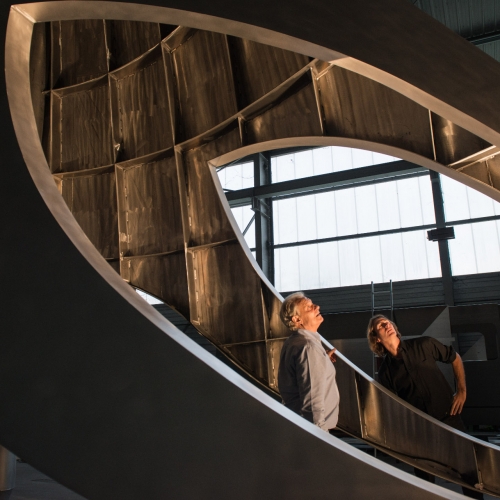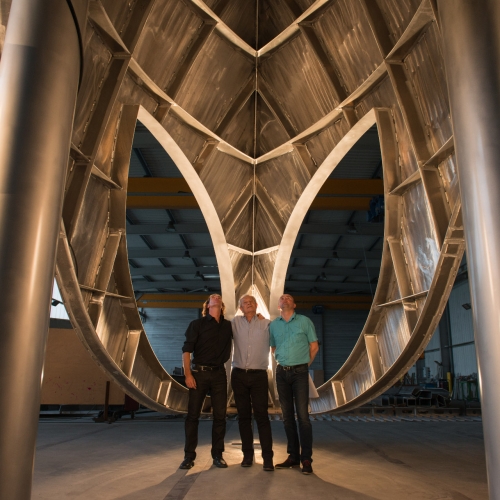SeaOrbiter
INTERNATIONAL OCEANIC STATION
A world first
A model of scientific and societal universality
Just as the International Space Station was built on the promise of scientific and technological cooperation between the USA, Europe and Russia at the time, SeaOrbiter wishes to bring together, around its concept and its missions, the set of planetary communities whose ocean, directly or indirectly, conditions the future. Alike France, which heavily promotes the principle of the Ocean as « Common Good of Humanity », SeaOrbiter will welcome researchers from all over the world and allow sharing of discoveries as a fundamental principle of its action. In the same spirit, SeaOrbiter will offer its perspective to players from all countries, of all ages and of all social origins and, thanks to the means of communication and education available today, will help to build, across the planet, a community responsible and invested in the preservation of the ocean and its priceless resources.
An International Oceanic Station, SeaOrbiter, the marine research platform of the future, is the epitome of innovation, exploration and inspiration serving the Ocean, Space and Blue Society.
SeaOrbiter, thanks to its ability to promote innovation in multiple sectors as in many other technological and industrial areas, thanks to its international ambitions and thanks to its vision in terms of development and inspiration for young generations, has the vocation to become a universal symbol on the major issues that link the ocean and human societies: a « Blue Economy » accelerator to build a true « Blue Society ».
SeaOrbiter is the only manned vessel in the world allowing a 24/7 exploration on long-term missions of the open sea and the abyss. Inspired by Nature, it has been designed based on biomimicry principles, using the imitation of models, systems and elements of nature in order to create a symbiotic slow pace drifting vessel.
SeaOrbiter is a nomadic underwater home able to host 18 to 22 crew members to observe, listen to and study marine ecosystems 24/7 on long-term scientific missions lasting over 6 months. It enables its crew to live in symbiosis with marine animals in the midst of the oceans.
SeaOrbiter is a scientific platform that gives us a direct insight into the ecosystem of the open ocean, thanks to its capabilities of uninterrupted continuous observation and analysis of physiochemical parameters. The vessel is designed to evolve in a quiescent mode to better capture a great variety of physical and ecological data.
SeaOrbiter allows conducting experiments in a complex and confined extreme environment and to undertake permanent and direct exists into the aquatic realm at -12m below the surface. It deploys vehicles and devices for exploring the deep ocean down to 6000m. Due to its similarities with the life conditions found in space, SeaOrbiter provides a space simulator.
SeaOrbiter is a multimedia communication platform producing a constant flow of educational programs and information for the public. With its integrated multimedia production unit and its real-time communication capabilities, SeaOrbiter is able to share the adventures and discoveries directly with the world in real-time.
“It is from the ocean and the space that will be born the destiny of civilizations to come.”
– JACQUES ROUGERIE
Architect Oceanographe, Member of the French Institut
Anatomy
Origins
Today. SeaOrbiter
SeaOrbiter is a synthesis of all of the vessels and mobile underwater homes that Jacques Rougerie has designed and built. The concept is characterized by innovating new technologies and the creative genius of its designer, which result in an unheard boldness of live marine environment observation.
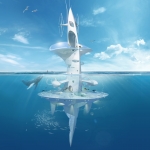
1988. La Chalupa
In 1992, Richard Presley (USA) spent 69 days and 19 min in La Chalupa research laboratory, an underwater module built by famous undersea pioneer Ian Koblick and set at a lagoon in Key Largo, Florida. The test was carried out as part of a mission entitled Project Atlantis which had as its aim to explore the human factors of living in an undersea. On that occasion Jacques Rougerie and his friend Jean-Loup Chrétien, at that time still a NASA astronaut, came to visit along with Russian cosmonaut Vladimir Titov.
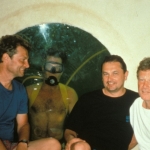
1982. Aquaspace
Launched in 1982, this trimaran allows 12-18 people to observe the underwater fauna and flora continuously from an observation deck below the waterline. Still in use around the Netherlands Antilles, Aquaspace pioneered a new concept in marine biology studies from the surface.
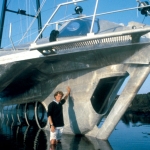
1979. Aquascope
This semi-submersible trimaran designed for underwater leisure observation operates on a variable buoyancy principle, which delivers exceptional underwater views through its large panoramic portholes. A series of 25 Aquascopes were built and some are still sailing today.
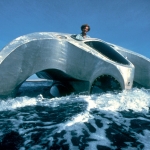
1977. Galathée
The first underwater house built by Jacques Rougerie was launched and immersed in 1977. The unique feature of this habitat-laboratory is that it can be moored at any depth between 9m and 60m, which gives it the capability of phased integration in the marine environment.
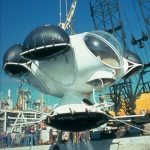
1961. Trieste
It’s onboard Trieste, a bathyscaphe developed by his father Auguste Piccard, that Jacques Piccard carried out, on January 23, 1960, along with capt. Don Walsh, an officer in the US Navy, a dive down to 10 916 m at the heart of the Mariana trench in the western Pacific, setting the world record for the deepest dive in history. This record, which still has not been beaten, was a decisive step in exploring our oceans and whose impact was planetary.
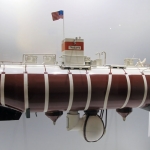
1956. Calypso
Jacques-Yves Cousteau introduced us to the Silent World through the prism of television, which gave him an audience and international acclaim. In this way the Merien community swelled as the Calypso pursued its adventures in all the oceans of the world.
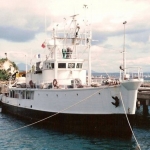
1870. Nautilus
His novel “Twenty Thousand Leagues Under the Sea” was undoubtedly the first catalyst for a community known as the Meriens, mustered symbolically behind the Nautilus.
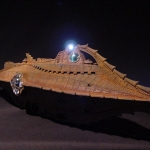
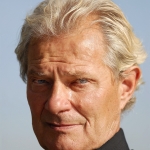
Jacques Rougerie
The original idea and design of SeaOrbiter are created by the world-renowned French architect Jacques Rougerie. SeaOrbiter continues the legacy of Jules Verne, Jacques Piccard and Jacques-Yves Cousteau, exceptional visionaries who have influenced Jacques Rougerie in his 35 years of research.
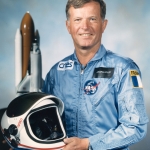
Jean-Loup Chrétien
The first Frenchman and the first European in space, Jean-Loup Chrétien has three space flights on his name. The long-time friend of Jacques Rougerie has been notably instrumental in getting the space agencies, particularly NASA, on board with the SeaOrbiter project, initiating the link between space and the ocean which is now at the heart of the SeaOrbiter program.
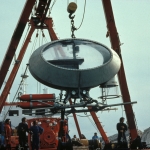
1981. Hippocampe
This underwater habitat was launched in 1981 to act as a scientific base suspended in midwater, using the same method as Galathée. Hippocampe can accommodate 2 people on saturation dives up to a depth of 12m.
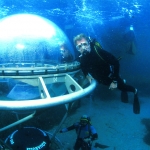
1978. Aquabulle
Launched for the first time in March 1978, this underwater shelter suspended in midwater (between 0 and 60 meters) is a mini scientific observatory 2.8 meters high by 2.5 meters in diameter. The Aquabulle can accommodate 3 people for a period of several hours and acts as an underwater refuge. A series of Aquabulles were later built and some are still being used by laboratories.
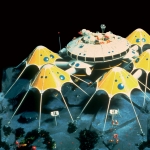
1973. Underwater village
In 1973, Jacques Rougerie imagined a submerged village where men can live beneath the sea. The village was designed to accommodate aquanauts and astronauts. Its biomimetic architecture was later adapted to the study and management of sub-aquatic resources.
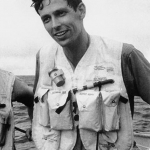
Jacques Piccard
Son of the famous Auguste Piccard who pioneered the stratospheric balloon, Jacques Piccard was one of the greatest explorers of the ocean abysses of the 20th century. Piccard together with Jacques Rougerie would go on to develop the idea of a drifting vessel which culminated in the birth of SeaOrbiter.
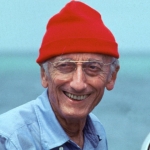
Jacques-Yves Cousteau
The father of modern diving, Jacques-Yves Cousteau was on one the three famous “Mousquemers” (musketeers of the sea). Together they popularized diving and opened up the underwater world to the wide public, Cousteau in particular taking the route to cinema and television. He was the first to install houses on the seabed, inspiring Jacques Rougerie in his creations.
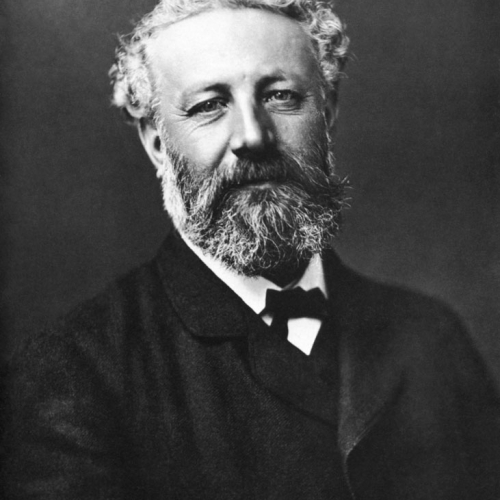
Jules Verne
Jules Verne’s vision on how technology could allow people to move freely in the undersea world had a powerful influence on Jacques Rougerie, who adopted the maxim of this great writer:
“Anything one man can imagine, other men are capable of realizing”
Planetary Challenges
The Ocean Is At The Heart Of Our Planet
The Ocean Regulates Our Climate
The Ocean Feeds Us
The Ocean Remains Largely Unknow
The Ocean Is A Source Of Global Wealth
A Unique Opportunity For A New Emerging Blue Society
Program

01 / SCIENCE
SeaOrbiter’s contribution to science will encompass a wide spectrum of scientific fields and allow scientists to better understand its links with the atmosphere and the planet’s climate. It will also provide opportunities to discover new species and new molecules that will allow enhancing new marine wealth that will tomorrow be a source of innovation and progress.
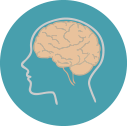
02 / EDUCATION & COMMUNICATION
Through producing a constant flow of educational programs and information for the public, SeaOrbiter will enable a better understanding of the Ocean’s critical role within our planetary system, notably in the context of global warming and its many impacts on the Ocean, its balance, its biodiverity and its related human and socio-economic communities.

03 / AWARENESS & PROTECTION
While exploring the wonders of nature that lie in the heart of the Ocean SeaOrbiter’s mission is to inform the public on the vulnerability of the oceanic ecosystems and induce action towards their preservation and a more responsible and sustainable use of the Ocean’s resources. It will thus embrace the idea of the Ocean as a common good for Humanity.
Team
- JACQUES ROUGERIEFOUNDING PRESIDENT
- Francis VALLATPRESIDENT’s SPECIAL ADVISOR
- Ariel FuchsSCIENCE AND INTERNATIONAL PARTNERSHIP DIRECTOR
- BILL TODDTECHNICAL AND OPERATION DIRECTOR
- STEPHANE CHICHEFINANCIAL DIRECTOR
- MARGAUX MARTIN-PERIDIERPROJECT COORDINATOR
- LINN SEKUNDSCIENTIFIC COORDINATOR
- Jean-Marie JobLEGAL ADVISOR
Financial Advisors
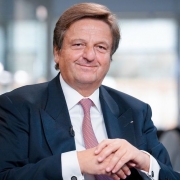 Jean-Luc AllavenaApollo Global Management Partner
Jean-Luc AllavenaApollo Global Management PartnerJean-Luc Allavena is a Monegasque businessman and company director. He joined the Apollo Global Management investment fund as a partner in 2007 and is Chairman and Founder of Atlantys Investors.
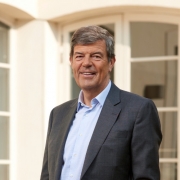 Gonzague de BlignièresRaise Co-founder
Gonzague de BlignièresRaise Co-founderGonzague de Blignières is a French financier specializing in private equity and leveraged buy-outs (LBOs). He is co-founder of Raise and Réseau Entreprendre with Clara Gaymard.
- PATRICK AUGIERPUBLIC FUNDING ADVISOR
Patrick Augier, vice-admiral much appreciated by the maritime community in which he has carried out numerous civil and military functions, is the general secretary advisor and member of the executive committee of Ponant.
Ambassadors
- H.S.H Prince Albert II of Monaco
“The SeaOrbiter is an extraordinary tool which will give the public a new perspective of the oceans and the underwater environment.”
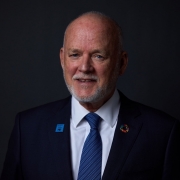 Ambassador Peter ThomsonUnited Nations Sustainable Goals’ special envoy for the Ocean
Ambassador Peter ThomsonUnited Nations Sustainable Goals’ special envoy for the OceanAs UNSG’s Special Envoy for the Ocean, leads global support for the implementation of UN SDG 14. He served as President of the UN General Assembly, 2016-17, as Fiji’s Permanent Representative to the UN 2010-2016, during which time he led the Executive Board of UNDP, UNFPA and UNOPS and was elected as President of the International Seabed Authority’s Assembly and Council. He is the founding Co-Chair of the World Economic Forum’s Friends of Ocean Action and is a supporting member of the High-Level Panel for Sustainable Ocean Economy.
- Dan GOLDINAMBASSADOR AND ADVISOR FOR THE US SCIENTIFIC STRATEGY, RELATIONS WITH THE INTERNATIONAL SPACE AGENCIES
NASA administrator from 1992 to 2001, Daniel S. Goldin is the Founder, President and Chief Executive Officer of the Intellisis Corporation, a company developing a new generation of intelligent information systems.
- Sylvia EARLEAMBASSADOR FOR OCEAN EXPLORATION
A world renowned American oceanographer Sylvia Earle was the first female chief scientist at NOAA, the US National Oceanic and Atmospheric Administration. Since 1998 she has been a National Geographic explorer-in-residence.
- Jean-Michel COUSTEAUAMBASSADOR FOR MARINE ENVIRONMENT EDUCATION
Jean-Michel Cousteau is an environmentalist, educator and film producer and has devoted his life to sharing people of all nations his passion and concern for the ocean. He is the President of Green Cross France et Territoires and Co-President of the World Ocean Network.
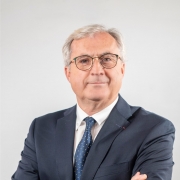 FREDERIC MONCANY DE SAINT-AIGNANMARITIME ECOSYSTEM AMBASSADOR
FREDERIC MONCANY DE SAINT-AIGNANMARITIME ECOSYSTEM AMBASSADORFrédéric Moncany de Saint-Aignan is Knight of the Legion of Honor, Officer of the National Order of Merit and Officer of Maritime Merit. He is President of the French Maritime Cluster and elected Vice-President of the network of European maritime clusters and then became Chairman of the board of directors of the Ecole Nationale Supérieure Maritime. He is a captain of the citizen reserve of the French Navy.
- Jean Loup CHRETIENAMBASSADOR AND SPACE ADVISOR
The first French astronaut in space, Jean-Loup Chrétien has made three space flights, two with Russia and one with NASA on board the space shuttle Atlantis.
- Jean-François CLERVOYAmbassador and Advisor for Activities in Space and Extreme Environments
Jean-François Clervoy is a senior astronaut at ESA having travelled in space three times and the CEO of Novespace, a company organizing parabolic flight campaigns.
International Scientific & Ethic Board
- Françoise GaillHead of the scientific committee
A marine biologist and a specialist of deep-sea ecosystems, Françoise Gaill headed the Environment and Sustainable Development Department of the CNRS (French National Scientific Research Centre), then its Ecology and Environment Institute. As an Emeritus Director of Research and scientific advisor at CNRS, she is the scientific coordinator of the international Ocean and Climate Platform and leadsthe creation of a UN based coalition, an international scientific platform similar to the IPCC (International Panel for Climate Change), but dedicated solely to the ocean : the International Platform on Ocean Sustainability (IPOS).
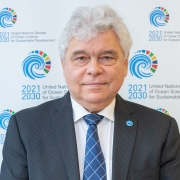 Vladimir RyabininEXECUTIVE SECRETARY OF UNESCO’S INTERGOVERNMENTAL OCEANOGRAPHIC COMMISSION
Vladimir RyabininEXECUTIVE SECRETARY OF UNESCO’S INTERGOVERNMENTAL OCEANOGRAPHIC COMMISSIONOceanographer, climatologist and marine engineer. He serves as Executive Secretary of the Intergovernmental Oceanographic Commission of UNESCO and Assistant Director-General of UNESCO. He graduated from the Oceanological Faculty of the then (1978) Leningrad Hydrometeorological Institute and was candidate of physical and mathematical sciences (equiv. to PhD 1982) and Doctor of Sciences (1995). He used to work as a postdoc, junior, senior, principal scientist and head of a laboratory at the Hydrometcentre of Russia, was a principal researcher at two European Commission projects in Malta, the Executive Director of the International Ocean Institute and senior scientific officer of the World Climate Research Programme (WCRP) at WMO.
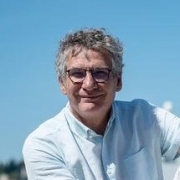 VINCENT RIGAUDIFREMER OFFICIAL REPRESENTATIVE AND SCIENCE ADVISOR
VINCENT RIGAUDIFREMER OFFICIAL REPRESENTATIVE AND SCIENCE ADVISORVincent RIGAUD, a researcher and robotic engineer joined Ifremer in 1990, where he founded in 1991 the « Underwater Robotics and Artificial Intelligence » laboratory, becaming in 1999 director of the « Underwater Systems » unit. He has conducted numerous projects for remotely operated and autonomous underwater drone systems, in particular for deep-sea applications, and is the author of more than 150 publications and 5 patents. Since the end of 2014 he has been director of the Ifremer center in the Mediterranean, covering the activity of the institute’s sites in the south of France and overseas departments.
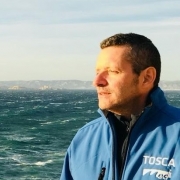 Richard SempéréOCEAN RESEARCH ADVISOR
Richard SempéréOCEAN RESEARCH ADVISORRichard Sempéré, PhD, is an oceanographer, marine and atmospheric geochemist and research director at the CNRS. He is currently director of the Institute of Ocean Sciences at the University of Aix-Marseille. His own research focuses on the carbon cycle, plastics, plastic additives and organic contaminants in atmospheric and aquatic systems. Since 2022, he is co-coordinator of the European Ocean Research and Education Alliance (EOREA).
- Charles KENNELADVISOR FOR THE US OCEAN SCIENCE COMMUNITY
Charles Kennel is an American scientist and member of the United States National Academy of Sciences. He’s also an Emeritus Professor at the Scripps Institution of Oceanography. He received the James Clerk Maxwell Prize in Plasma Physics in 1997. He was the director of Mission to Planet Earth, a program to perform a comprehensive survey and observation of our home planet.
- Gilles BOEUFBIOMIMETICS AND ETHICS ADVISOR
A Professor at the Pierre-et-Marie-Curie University, Sorbonne University, he was President of the National Museum of Natural History from February 2009 to August 2015 and visiting professor at the Collège de France in 2013-2014, on the « Development sustainability, environment, energy and society”. He has been a scientific advisor to the cabinet of the Minister of State for the Environment, Energy and the Sea. Since 2021, he has been a member of the National Advisory Committee on Ethics for Life Sciences and Health upon designation by the Minister of National Education
Studies & Tests
Current extensive engineering studies cover SeaOrbiter’s propulsion capacity, autonomy and range; the definition of the modes of energy supply, conversion, and storage with an emphasis on renewable sources; the optimization of the space dedicated to the living areas, laboratories and aquanaut facilities; the design of the ballasting system and the retractable keel; and the satisfaction of the sea-keeping and safety requirements in due cooperation with the relevant certification and maritime authorities.
The Norwegian Marine Technology Research Institute MARINTEK conducted tank tests with a 1/15 SeaOrbiter scale model that validated the design concept. Advanced theoretical studies and hydrodynamic tests were carried out at MARINTEK to improve SeaOrbiter’s sea keeping performance and to optimize its behavior in waves and wind. Following basic design studies have been conducted by Principia then D2M and are currently under suppervision of Bureau Veritas Solutions (BVS)
The Eye of SeaOrbiter
The Eye of SeaOrbiter, a full size test model of the upper part of the vessel, was successfully completed in the shipyard ACCO in May 2015. The construction was part of a crowdfunding campaign that was organized to raise public interest and that reached nearly €345 000 – 106% of the inital campaign target.
Out of the vessel’s total height of 57m, the Eye of SeaOrbiter stands at 18,5m above the waterline. It is designed to host the lookout post as well as radio and communication systems.
MEDIA & FOLLOWING
Become a Partner
Giving SeaOrbiter’s unique concept, innovative features and the nature of its program that encompasses technology, science, education & communication, awareness & responsibility, SeaOrbiter could equally be an intelligent tool dedicated to your challenges.
Mission SeaOrbiter
___
Paris Office
Péniche Saint Paul
Port des Champs-Élysées
75008 Paris
France
___
Marseille Office
23 rue des Phocéens
13002 Marseille
France
___
seaorbiter@seaorbiter.com
+33 1 42 66 53 37
Péniche Saint Paul
Port des Champs-Élysées
75008 Paris
France
seaorbiter@seaorbiter.com
+33 1 42 66 53 37
